-
 bitcoin
bitcoin $121833.232455 USD
-0.63% -
 ethereum
ethereum $4394.437030 USD
-2.00% -
 tether
tether $1.000570 USD
0.04% -
 bnb
bnb $1255.553465 USD
-3.73% -
 xrp
xrp $2.814944 USD
-1.59% -
 solana
solana $221.835346 USD
-2.40% -
 usd-coin
usd-coin $0.999869 USD
0.01% -
 dogecoin
dogecoin $0.249495 USD
-1.32% -
 tron
tron $0.336905 USD
-1.24% -
 cardano
cardano $0.816464 USD
-1.69% -
 chainlink
chainlink $22.130946 USD
-1.27% -
 hyperliquid
hyperliquid $44.208522 USD
-3.46% -
 ethena-usde
ethena-usde $1.000521 USD
0.02% -
 sui
sui $3.422897 USD
-2.51% -
 stellar
stellar $0.380164 USD
-1.31%
How to use a crypto bridge safely?
A crypto bridge enables secure transfer of assets between blockchains like Ethereum and Solana, but users must choose audited, reputable platforms to avoid scams and permanent fund loss.
Aug 13, 2025 at 11:36 am
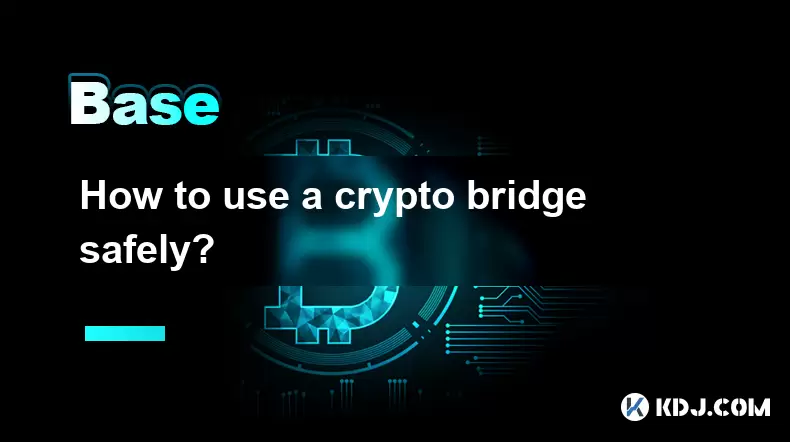
Understanding the Role of a Crypto Bridge
A crypto bridge is a decentralized protocol that enables the transfer of assets and data between two different blockchain networks. These bridges are essential because blockchains like Ethereum, Binance Smart Chain, and Solana operate independently and are not natively compatible. By using a crypto bridge, users can move tokens such as USDT, ETH, or BNB from one chain to another, unlocking access to new decentralized applications (dApps), liquidity pools, or lower transaction fees. The underlying mechanism often involves locking tokens on the source chain and minting equivalent tokens on the destination chain—or burning and releasing in reverse.
When selecting a bridge, it is crucial to assess its security model. Some bridges use federated validators, while others rely on smart contracts or oracles. Each model carries different risks. For example, a bridge with a small number of validator nodes may be more susceptible to collusion or downtime. Users must verify whether the bridge has undergone audits by reputable firms such as CertiK, Hacken, or OpenZeppelin.
Choosing a Reputable and Audited Bridge Platform
Not all crypto bridges are created equal. To use a bridge safely, start by researching platforms with a proven track record. Look for bridges that are open-source, meaning their code is publicly available for inspection. Platforms like Polygon PoS Bridge, Arbitrum Bridge, and Wormhole provide transparency through GitHub repositories and detailed documentation.
Check if the bridge has been audited multiple times. A single audit is not sufficient. Reputable projects undergo regular audits and publish the results. Search for audit reports on the official website or third-party security platforms. Pay attention to whether critical vulnerabilities were found and if they have been resolved.
Also, verify the bridge’s total value locked (TVL) on sites like DeFi Llama. A higher TVL often indicates greater user trust and sustained usage. Avoid bridges with minimal activity or those promoted solely through social media without verifiable community engagement.
Securing Your Wallet and Private Keys
Before initiating any bridge transaction, ensure your crypto wallet is secure. Use a non-custodial wallet such as MetaMask, Trust Wallet, or Ledger Live. Never share your seed phrase or private keys with anyone. Store your seed phrase offline, preferably on a hardware wallet or a metal backup.
Enable two-factor authentication (2FA) if your wallet interface supports it. When connecting your wallet to a bridge website, double-check the URL to avoid phishing sites. Scammers often create fake versions of popular bridges with slight misspellings in the domain name.
Before approving any transaction, review the contract permissions. If a bridge requests approval to spend more tokens than you intend to transfer, reject it. Use wallet features like transaction simulation (available in MetaMask) to preview the outcome of a transaction before signing.
Executing a Safe Bridge Transaction
Once your wallet is secured and the bridge platform verified, follow these steps carefully:
- Navigate to the official bridge website and connect your wallet using the designated “Connect Wallet” button.
- Select the source blockchain (e.g., Ethereum) and the destination blockchain (e.g., Arbitrum).
- Enter the amount of tokens you wish to transfer. Ensure you leave enough native tokens (like ETH or MATIC) for gas fees on both chains.
- Click “Bridge” and review the estimated fees, processing time, and slippage tolerance.
- Approve the transaction in your wallet only after confirming the details match your intent.
- Wait for the transaction to be confirmed on the source chain. This may take several minutes depending on network congestion.
- Monitor the bridge interface for a completion message. Some bridges require manual claiming on the destination chain.
- After the transfer, verify the balance in your wallet on the new network by adding the correct token contract address if the token doesn’t appear automatically.
Always double-check addresses before confirming. A single incorrect character can result in permanent loss of funds.
Monitoring Post-Transaction Security
After completing a bridge transfer, remain vigilant. Check the transaction hash on a blockchain explorer like Etherscan or Polygonscan to confirm the movement of funds. If using a liquidity-based bridge, ensure the destination tokens were minted correctly and match the expected amount minus fees.
Revoke unnecessary token approvals through tools like revoke.cash or MetaMask’s token approval manager. Old or unused approvals can be exploited if a bridge contract is compromised in the future.
Monitor your wallet activity for unexpected transactions. Set up wallet alerts using services like Tenderly or Blocknative to receive notifications for any contract interactions involving your address.
Recognizing and Avoiding Common Scams
Phishing attacks are rampant in the crypto bridge space. Never click on bridge links from unsolicited messages, social media ads, or email attachments. Always type the official URL manually or use a trusted bookmark.
Beware of fake support agents on Discord or Telegram. Legitimate bridge teams will never ask for your private keys or seed phrase. Ignore any pop-ups claiming your transaction failed and urging you to resend funds—this is a common replay attack tactic.
Avoid bridges that promise instant transfers with no confirmation time. Legitimate cross-chain transfers require time for validation and finality. If a bridge offers unusually high APY for providing liquidity, research the incentive model and tokenomics thoroughly—high returns often signal high risk.
Frequently Asked Questions
Can I reverse a crypto bridge transaction if I send it to the wrong chain?No, blockchain transactions are irreversible. If you bridge assets to an incorrect network and the tokens do not appear, recovery depends on the bridge’s design. Some bridges support manual recovery through customer support or governance requests, but many do not. Always confirm the destination chain before initiating a transfer.
What happens if a bridge gets hacked after I deposit my tokens?If a bridge is compromised, funds locked in its smart contracts may be stolen. Projects with insurance funds or bug bounties may offer partial reimbursement, but there is no guarantee. This is why using audited and decentralized bridges with strong security practices is essential.
Do I need to pay fees on both the source and destination chains?Yes. You must have enough native currency (e.g., ETH, BNB, MATIC) on the source chain to pay for the initial transaction. After bridging, you may need additional gas on the destination chain to claim or interact with the received tokens. Always account for both costs before starting.
How can I verify the legitimacy of a new or lesser-known bridge?Check if the bridge has a public GitHub repository, published audit reports, active community channels (Discord, Twitter), and listings on reputable platforms like DeFi Llama or Chainlist. Search for independent security reviews and avoid bridges with anonymous teams or unclear documentation.
Disclaimer:info@kdj.com
The information provided is not trading advice. kdj.com does not assume any responsibility for any investments made based on the information provided in this article. Cryptocurrencies are highly volatile and it is highly recommended that you invest with caution after thorough research!
If you believe that the content used on this website infringes your copyright, please contact us immediately (info@kdj.com) and we will delete it promptly.
- Starknet (STRK) Price Pumping: What's Behind the Surge?
- 2025-10-10 22:45:15
- Dogecoin, Bitcoin, and Chart Analysis: Navigating the Crypto Seas
- 2025-10-10 22:45:15
- Crypto, Bitcoin, Buy Now: Navigating the Current Landscape
- 2025-10-10 22:50:01
- Meme Coin Mania: Is Layer Brett the New Dogecoin?
- 2025-10-10 22:50:01
- Ozak AI Crypto Presale: Hitting Funding Targets and Redefining AI on the Blockchain
- 2025-10-10 22:25:15
- Changpeng Zhao, AsterLiquid, and Allegations: Decoding the Crypto Drama
- 2025-10-10 22:25:15
Related knowledge
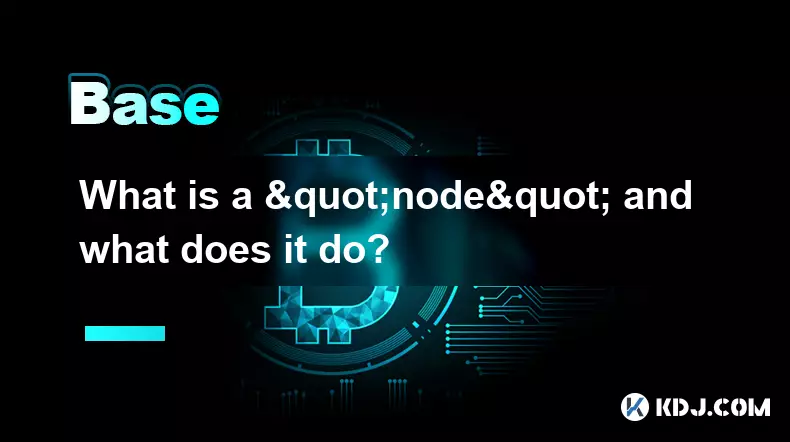
What is a "node" and what does it do?
Oct 10,2025 at 02:54pm
Understanding the Role of a Node in Blockchain Networks1. A node refers to any computer or device that participates in a blockchain network by maintai...
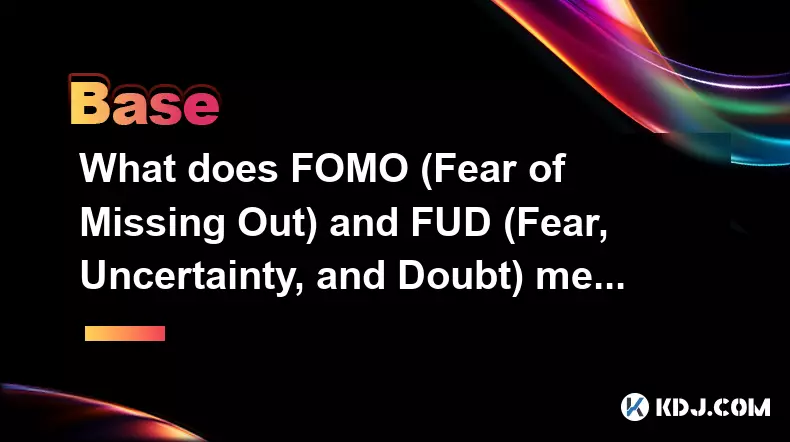
What does FOMO (Fear of Missing Out) and FUD (Fear, Uncertainty, and Doubt) mean?
Oct 10,2025 at 02:36pm
FOMO in the Cryptocurrency Market1. FOMO, or Fear of Missing Out, is a psychological trigger that drives individuals to act quickly out of concern the...

Do you have to pay taxes on cryptocurrency gains?
Oct 10,2025 at 03:19pm
Tax Obligations for Cryptocurrency Gains1. Cryptocurrency is treated as property by tax authorities in many jurisdictions, including the United States...

How does cryptocurrency achieve decentralization?
Sep 30,2025 at 04:37am
Understanding the Foundation of Decentralization in Cryptocurrency1. Cryptocurrency achieves decentralization primarily through the use of blockchain ...
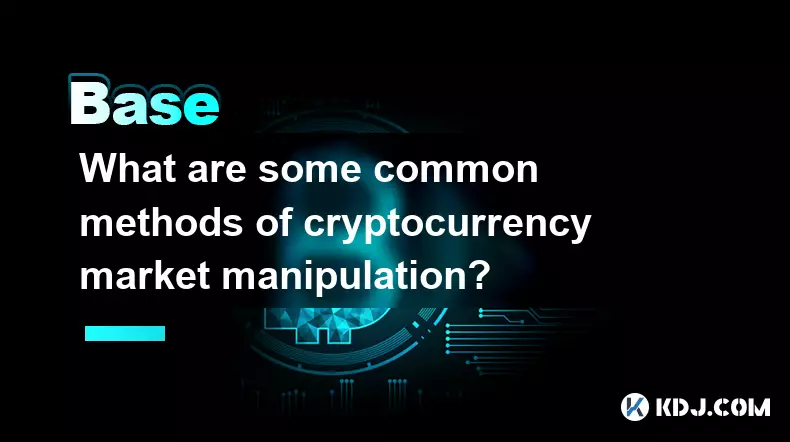
What are some common methods of cryptocurrency market manipulation?
Sep 27,2025 at 02:55am
Wash Trading and Its Impact on Market Perception1. Wash trading involves an individual or entity simultaneously buying and selling the same cryptocurr...
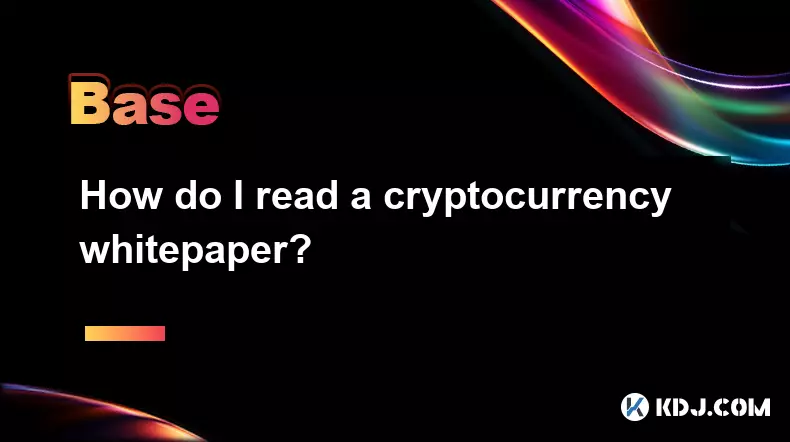
How do I read a cryptocurrency whitepaper?
Sep 27,2025 at 05:54am
Understanding the Structure of a Cryptocurrency Whitepaper1. Begin by identifying the executive summary, which outlines the project’s core vision and ...

What is a "node" and what does it do?
Oct 10,2025 at 02:54pm
Understanding the Role of a Node in Blockchain Networks1. A node refers to any computer or device that participates in a blockchain network by maintai...

What does FOMO (Fear of Missing Out) and FUD (Fear, Uncertainty, and Doubt) mean?
Oct 10,2025 at 02:36pm
FOMO in the Cryptocurrency Market1. FOMO, or Fear of Missing Out, is a psychological trigger that drives individuals to act quickly out of concern the...

Do you have to pay taxes on cryptocurrency gains?
Oct 10,2025 at 03:19pm
Tax Obligations for Cryptocurrency Gains1. Cryptocurrency is treated as property by tax authorities in many jurisdictions, including the United States...

How does cryptocurrency achieve decentralization?
Sep 30,2025 at 04:37am
Understanding the Foundation of Decentralization in Cryptocurrency1. Cryptocurrency achieves decentralization primarily through the use of blockchain ...

What are some common methods of cryptocurrency market manipulation?
Sep 27,2025 at 02:55am
Wash Trading and Its Impact on Market Perception1. Wash trading involves an individual or entity simultaneously buying and selling the same cryptocurr...

How do I read a cryptocurrency whitepaper?
Sep 27,2025 at 05:54am
Understanding the Structure of a Cryptocurrency Whitepaper1. Begin by identifying the executive summary, which outlines the project’s core vision and ...
See all articles










































































